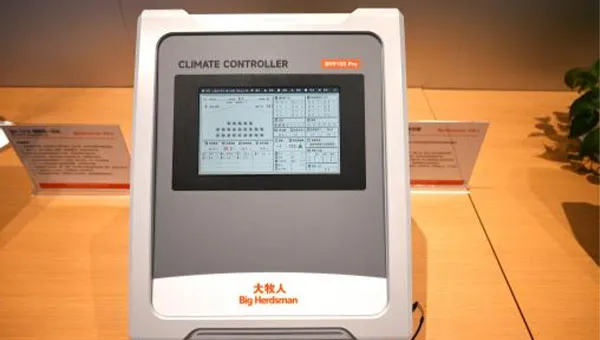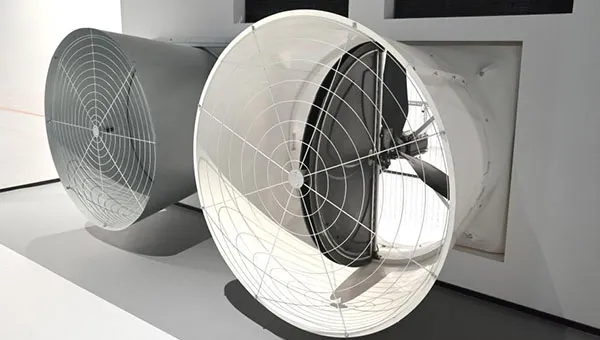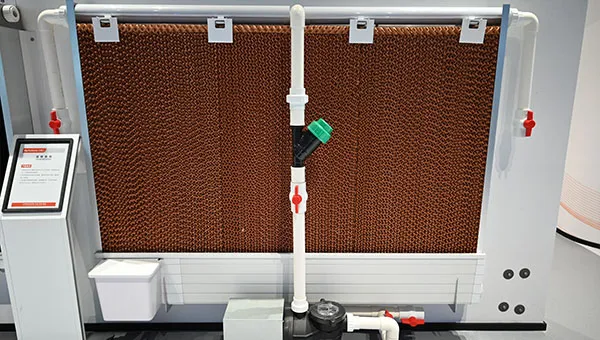Ensuring the Best Environmental Control System for Indoor Livestock Operations
Facing fluctuating weather, disease risks, and energy costs, modern livestock facilities need reliable environmental control. Big Herdsman’s systems automate temperature, humidity, ventilation, lighting, and air quality—ensuring consistent animal growth, welfare, and profitability.
What Is an Environmental Control System in Livestock & Poultry Farming?
An environmental control system for livestock integrates sensors, controllers, and mechanical components (fans, heaters, cooling pads, etc.) to regulate:
- Temperature & humidity
- Airflow and ventilation
- Ammonia and CO₂ concentration
- Lighting schedules
- Smart data feedback and alerts

These systems ensure each barn becomes a controlled environment, perfectly tailored for broilers, layers, ducks—or even aquaculture setups.
Core Components of Big Herdsman’s Optimal Climate Control Solutions
| Component |
Function |
| Ventilation Fans |
Circulate air, control heat, remove harmful gases |
| Smart Controller |
Aiming at centralized and efficient management of acresltiple houses |
| Air Inlets |
Enhance poultry house airflow |
| Cooling Pads |
Maintain ideal poultry house temperatures |
| Heaters |
Rapid heating in cold seasons |
| Automated Curtain System |
Optimize poultry house airflow |
| Lighting Systems |
Gan control the brightness, time and brightness change of DC lights |
| Panel Doors |
Enhance poultry house insulation |
| Smart Farm Net (IoT) |
Fully supporting BH series of environmental control devices. |
For more information, please click here.
🌡️ Precision Climate Management: Benefits for Poultry & Swine
- Consistent Growth Rates
By maintaining optimal environmental conditions, livestock can grow uniformly with minimal stress.
- Lower Mortality & Better Welfare
Balanced temperature and clean air reduce disease risk and improve welfare.
- Energy Savings
Automated systems reduce overuse of fans, heaters, and coolers—delivering up to 30% energy savings.
- Centralized Smart Management
Smart Farm Net provides real-time alerts and remote control via a single dashboard.

Managing Environmental Factors – Step by Step
- Temperature Control
Heaters activate when below threshold; cooling pads and fans engage as it rises.
- Humidity Regulation
Adjustable ventilation and heat maintain humidity within optimal range to prevent disease.
- Air Quality Control
Fans and inlets reduce ammonia and CO₂, improving health and respiratory conditions.
- Lighting Management
Programmable light cycles support brooding, growth, and laying phases.
- Remote Monitoring & Alerts
Sensors send real-time data to the control system; any threshold breaches trigger alerts via Smart Farm Net.

Smart Automation & Sensor Systems
Sensors serve as the backbone of modern farming:
- Temperature, humidity, gas sensors installed at multiple points bring precision and redundancy.
- Real-time data provides alerts, historical logs, and performance trends.
- Automated control systems execute adjustments—without manual intervention.
These intelligent systems enable predictive maintenance and fine-tuned environmental control.

Cooling pad
Implementation Best Practices
- Initial Audit
Evaluate house size, animal type, local climate, and electrical infrastructure.
- System Design
Develop modular solutions—ventilation, heating, cooling, lighting, and IoT control.
- Professional Installation
Use certified technicians to ensure seamless integration and calibration.
- Training & Commissioning
Provide staff training, startup testing, and validation of system performance.
- Ongoing Support
Regular maintenance, remote analytics, field visits, and spare parts available worldwide.
FAQs
Can these systems adapt to seasonal changes?
Yes. Curtains, fans, cooling pads, and heaters all activate dynamically via the control system.
Does retrofitting affect capital cost significantly?
Retrofitting often requires less capital than new builds, and ROI can be faster due to incremental upgrades.
Is there global support for service and parts?
Yes—Big Herdsman offers global technical service, parts, and training for major livestock markets.
How is data communicated?
Via Smart Farm Net, accessible on desktop or mobile, offering alerts, logs, and remote control.



